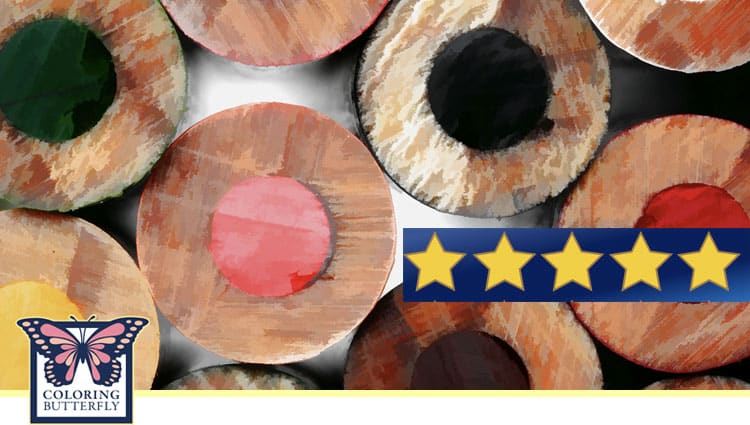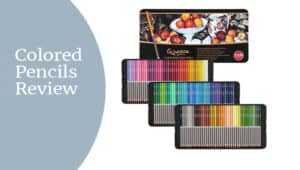
Table of Contents
ToggleHow to spot real and fake Amazon Reviews for Coloring Supplies.
Anytime you shop online, you probably make place importance on the reviews. Regarding colored pencils, coloring books, and coloring accessories, online reviews, articles, and YouTube videos play a significant role in our decision-making. Remember, you will spend many hours enjoying your hobby, creating art, and expressing yourself.
In this article, I want to share what I have learned about recognizing the reviews I trust most and those I run away from.
Spot Real vs. Fake Amazon Reviews
Table of Contents
Other resources. Check out other supporting resources on ColoringButterfly.com that you might enjoy.
- 11 Ways to Spot Fake Coloring Books on Amazon (Checklist)
- Want Colored Pencil Paper? 13 Top Choices for Adult Coloring
- Buying Colored Pencils? Everything You Need Know (Guide)
- How to Check New Colored Pencils for Damage (4 Easy Steps)
How to Spot Fake Amazon Reviews
How can I spot fake Amazon reviews? Fake reviews are more common than you think. These reviews can be written on behalf of a brand, competitor, or third-party seller. They are usually glowing or negative reviews written by someone who has purchased or used the product. These reviews are designed to mislead you in deciding about a product. How to spot a fake Amazon review: [TOC]
spot a fake Amazon review: [TOC]
1 to 5-Star Reviews
Look at the percentage of 1- to 5-star reviews. You should typically expect 70% of the likes to be 4 or 5 stars and 30% to be 1-star reviews. [TOC]
Look for Bunches of Short Reviews
Be suspicious of a group/bunch of reviews in a row that are very short, positive or negative. These reviews can all be five stars, all one star, or all five stars with a few 1-star reviews mixed in. It is a good chance these reviews are paid for. [TOC]
Vague Reviews Raise Red Flags
Be suspicious of vague reviews. Be suspicious when you see one- or two-word reviews that are incredibly positive or negative, like “Love It!,” “Great,” “Amazing,” “Worth the Money,” or Horrible!” and do not explain why they feel that way. The review may be a fake Amazon review. [TOC]
Review Mentions of Competing Products
It is a red flag if the review mentions a competing product. It should be a big red flag if your review mentions that you should not buy the product but instead buy or check out the competing brand. For example, “I tried this product, hated it, and promptly bought the {insert competitor product here}, and I LOVE it! Go buy it here now for 20% off!”
It’s a red flag if an unknown or less popular product has 100s of reviews. If a reasonably unknown or less popular product has thousands of reviews, it’s worth giving those reviews a closer look. [TOC]
Look at Similar Review
Many sellers will provide their reviewers with a template when writing fake reviews. Multiple reviews highlighting the same information but with different wording could be fake reviews. [TOC]
same information but with different wording could be fake reviews. [TOC]
Bad Spelling and Grammar
Many fake reviews are outsourced to international content farms and are either written in poor English or not in a way an actual consumer would express their opinion. [TOC]
Product Release Date
Look at the product release date. If a review is published before the product is released, it is a fake review. [TOC]
Use A Timestamp Filter
Look and see if you can sort reviews by timestamp. Timestamp means the date and time a review was written. Why? Often, a company will pay people to write reviews during s specific period. You will be able to catch these situations. [TOC]
Ignore Goofy Reviews
Look out for the just plain “goofy” reviews. This is not necessarily a fake review, but it is the type of review that I would recommend you not take too seriously. These reviews write in all caps, use terrible grammar, put multiple exclamation points at the end of every sentence (!!!!!) and sometimes even swear. It is just hard to take what this person has to say as being credible. [TOC]
Notice the Language Used
Watch for the language people use in the industry. It might be a faker review if you read a review that used industry-specific terms not generally used by everyday people. For example, if I read a restaurant review that says “delectable cuisine” when talking about a restaurant, I would stop and think twice about the review. [TOC]
Notice Review History
Check the review history of the reviewer. If the reviewer has only left five-star, positive reviews on many different products, the reviews are most likely fake. [TOC]
Fake “Verified Customer”
A verified customer may not be a verified customer. I depend heavily on the “Verified Purchase” on Amazon. Customers can tell which reviews [are verified] because an orange badge appears next to the review. Amazon seller companies have learned how to play dirty. Sellers often reimburse buyers for purchasing their products and leaving a positive review. With this, even if a review is genuine and from a user who has 100% bought the product, it’s still possible that the buyer was paid for their services. So I depend upon all the other methods listed above to help me spot fake Amazon reviews. [TOC]
learned how to play dirty. Sellers often reimburse buyers for purchasing their products and leaving a positive review. With this, even if a review is genuine and from a user who has 100% bought the product, it’s still possible that the buyer was paid for their services. So I depend upon all the other methods listed above to help me spot fake Amazon reviews. [TOC]
How to Spot Ligament Amazon Reviews
How can I spot ligament reviews? When I read a review, I seek to see what others have experienced with a specific product. Have others purchased the product to do what I want to do? Have they posted photos, videos and more? Consider the following: [TOC]
Read 2 to 4 Star Reviews
Look at reviews with 2, 3, and 4 stars. A fake Amazon review will usually be a five or 1-star review from a brand, competitor, or third party. Look for moderate reviews in the middle of the road with two, three, or four stars. [TOC]
Search Products on Other Sites
Research products on other sites. Look beyond Amazon. YouTube is particularly valuable, especially in the coloring community. Be careful of articles full of affiliate links; don’t tell you they are affiliate links. I like the articles that let me know up front that they are associated with a company BUT have been given the freedom to say what they think. [TOC]
Focus on Longer Reviews
Look for longer reviews. Look for those reviews that take time to share their experience with the product. I especially like the ones that give you the pros and cons. [TOC]
Read the Product Q&A
The Q&A section is an often-overlooked section of the product page. The Q&A contains the commonly asked consumer questions, and the questions are answered by both consumers and employees of the company. Q&As are not about whether a person likes or dislikes a product. Instead, it’s about how the product has held up, had difficulty assembling, whether the colors match, and more. [TOC]
whether a person likes or dislikes a product. Instead, it’s about how the product has held up, had difficulty assembling, whether the colors match, and more. [TOC]
Review Timestamps
Use a timestamp filter to get the latest reviews. Look and see if you can sort reviews by timestamp. Timestamp means the date and time a review was written. Why? Companies make changes in their products. For example, one company did not print the name of colors or numbers on pencils in the reviews 2017-2019. In 2020, the company started printing names of colors and numbers. That way, you have the latest reviews guiding your decisions. [TOC]
Browser Extensions or App
Use a browser extension or App. Fakespot or ReviewMeta are great and easy tools that you can use to keep from being tricked on Amazon. Both have browser extensions, along with apps for Android and iOS, so that you can automatically see if a product has low-quality reviews when you’re shopping. You can also cut and paste the URL of a product page in either tool to get an analysis. [TOC]
- Fakespot grades reviews not only on Amazon but also on eBay, Best Buy, Sephora, Steam, TripAdvisor, Yelp and Walmart.
- Review Meta only works with Amazon.
Making Purchases Because of Fake Amazon Reviews
What happens if you purchase a product because of a bad review on Amazon? I do 95% of my shopping for coloring supplies on Amazon. This is the reason why I have used Amazon as an example. Please check their policies if you use a like Alibaba, DickBlick, Amazon, HobbyLobby, JerrysArtarama, CheapJoes and others. Amazon’s policies are straightforward. Go to the Amazon website, click on “Orders,” then “Return or Replace,” and return most items. I usually select that the “item was defective,” or the “description was inaccurate,” From there, I follow the return process. [TOC]
If you like this article, please share it with others.






